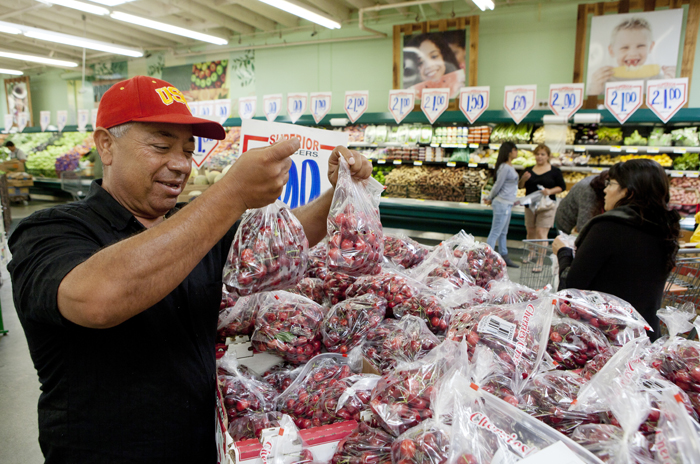WASHINGTON — Consumers spent more in April but much of the increase was eaten up by higher food and energy prices. After discounting for the jump in prices, spending barely budged and after-tax incomes were flat for a second straight month.
Consumer spending rose 0.4 percent, reflecting a surge in the category that covers food and gasoline, areas which showed big price gains last month, the Commerce Department reported today. Excluding price changes, spending rose a much smaller 0.1 percent.
Incomes rose 0.4 percent but after-tax incomes adjusted for inflation were flat for a second straight month.
Analysts are worried that weak income growth and big gains in gasoline and food prices are leaving consumers with little left to spend on other products. That could dampen economic growth. Consumer spending is closely watched because it accounts for 70 percent of economic activity.
The government reported Thursday that the overall economy grew at an anemic annual rate of 1.8 percent in the January-March period with consumer spending advancing at just half the pace of the previous three months. That big slowdown was blamed on the sharp spike in energy prices.
However, analysts think that consumer spending will strengthen, at least modestly, in coming months, especially if energy prices continue to decline. Since peaking at $3.98 a gallon on May 6, gasoline prices have fallen 4.4 percent with the nationwide average now down to $3.81, according to AAA. Some economists are forecasting the price will keep falling to around $3.50 over the next few weeks.
“If gasoline prices continue to fall, we could see some pick up in spending as we go through the summer,” said Joel Naroff, chief economist at Naroff Economic Advisors.
Many economists are forecasting that overall economic growth will rebound to around 2.5 percent in the current April-June quarter with enough strengthening in the second half of the year for the economy to turn in growth of around 3 percent for all of 2011, little changed from the 2.9 percent increase in 2010.
The April income and spending report showed that the savings rate was unchanged at 4.9 percent of after-tax incomes, the same as March.
Both months represented the smallest savings rate since October 2008, the month the country was plunged into a deep financial crisis which contributed to the worst recession since the 1930s. During the recession, Americans worked to build up savings out of concerns that they needed a deeper cushion in the face of massive job layoffs. The savings rate high a high of 8.2 percent in May 2009, the month before the recession ended.
A key inflation gauge preferred by the Federal Reserve showed prices rose 0.3 percent in April, the fifth straight month of gains of 0.3 percent or higher. However, excluding food and energy, inflation was up just 0.2 percent in April and 1 percent over the past 12 months, well below the level where the Fed would be worried that inflation could be a threat to the economy.
Send questions/comments to the editors.



Success. Please wait for the page to reload. If the page does not reload within 5 seconds, please refresh the page.
Enter your email and password to access comments.
Hi, to comment on stories you must . This profile is in addition to your subscription and website login.
Already have a commenting profile? .
Invalid username/password.
Please check your email to confirm and complete your registration.
Only subscribers are eligible to post comments. Please subscribe or login first for digital access. Here’s why.
Use the form below to reset your password. When you've submitted your account email, we will send an email with a reset code.